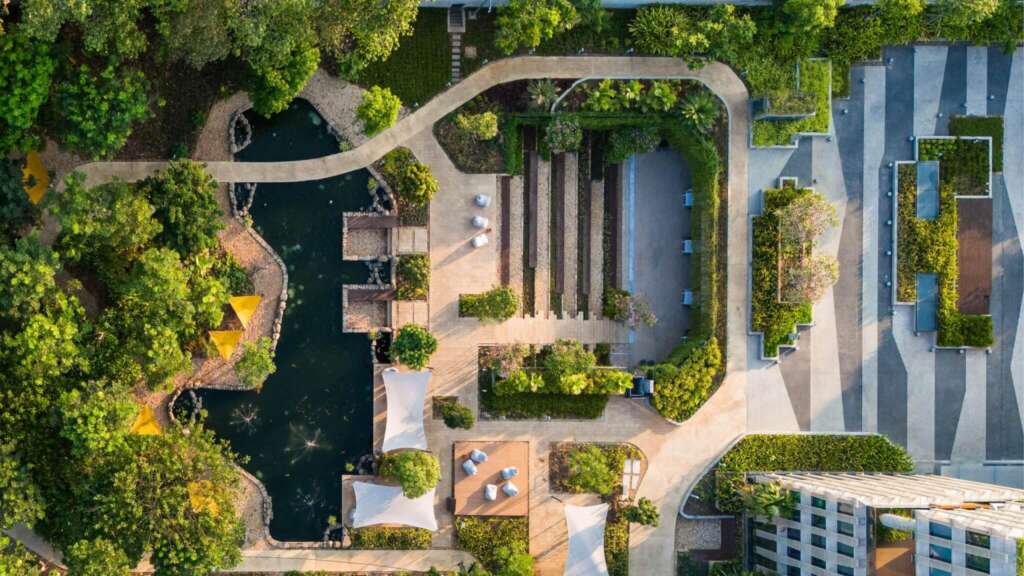Share This Article
In the world of city-building and spatial design, two disciplines often work side-by-side—but serve very different purposes: Urban Planning and Landscape Architecture. While both shape the environments we live in, their goals, tools, and approaches differ in powerful ways.
In this article, we break down the key distinctions between urban planners and landscape architects, helping you understand what each profession brings to the table—and why collaboration between them is vital for creating sustainable, livable cities.
What Does an Urban Planner Do?
Urban planners focus on the big picture—developing policies, land use plans, and zoning strategies that guide how cities grow.
Key Responsibilities:
- Drafting city development plans and zoning codes
- Managing transportation, housing, and land use policies
- Analyzing population data and environmental impact
- Planning for long-term growth and sustainability
- Engaging with communities and local governments
Common Tools:
- GIS (Geographic Information Systems)
- Planning software like ArcGIS Urban, UrbanFootprint
- Public policy frameworks and economic modeling
Educational Background:
Urban planners usually come from fields like urban studies, economics, geography, or public policy, often holding a master’s in Urban or Regional Planning.
What Does a Landscape Architect Do?
Landscape architects, on the other hand, shape outdoor spaces to be functional, beautiful, and ecologically responsible.
Key Responsibilities:
- Designing parks, greenways, plazas, and streetscapes
- Planning ecological restorations and stormwater systems
- Selecting plant species and materials for sustainability
- Integrating public space with built environments
- Enhancing aesthetic and recreational value
Common Tools:
- CAD software (AutoCAD, Rhino, Vectorworks)
- Revit, SketchUp, and Lumion for visualizations
- Ecological mapping tools and planting guides
Educational Background:
Landscape architects are trained in design, horticulture, ecology, and site engineering, typically holding a professional degree in Landscape Architecture (BLA or MLA).
Comparison: Urban Planner vs. Landscape Architect
| Role | Urban Planner | Landscape Architect |
| Focus | Policy, infrastructure, zoning | Parks, public spaces, ecological design |
| Scale | City or region-wide | Site or neighborhood level |
| Skillset | Policy, data analysis, land-use law | Design, ecology, material specification |
| Primary Output | Strategic plans, land use maps | Masterplans, planting layouts, renderings |
| Impact Area | Transportation, housing, economy | Environment, health, public realm |
Why Collaboration Is Key
Great urban environments aren’t made by planners or designers alone—they’re made when urban planning and landscape architecture work in sync.
- Urban planners set the framework—zoning laws, density guidelines, and development goals.
- Landscape architects bring design life to those frameworks—making them green, walkable, and human-centric.
Cities like Copenhagen, Singapore, and Portland are prime examples of this synergy—where ecological thinking is embedded in urban policy, and planning is shaped by design sensibility.

© LG Group
Real-World Examples: Urban Planning in India
1. Delhi Master Plan 2041
Developed by the Delhi Development Authority (DDA), this long-term blueprint outlines how India’s capital will grow sustainably over the next two decades.
- Focus: Land use zoning, affordable housing, transportation corridors, urban mobility.
- Key Planning Tools: GIS-based zoning maps, policy reforms, TOD (Transit-Oriented Development) frameworks.
- Impact: Addresses water scarcity, informal housing, and air quality through structured policy.

Delhi Master Plan © Planning Times
2. Chandigarh’s Sector Plan
Designed by Le Corbusier, Chandigarh’s iconic sector-based layout remains one of the finest examples of modernist urban planning in India.
- Focus: Hierarchical road networks, zonal distribution, civic centers.
- Planner’s Role: Coordinated land allocation, traffic patterns, and development control norms.
- Legacy: A model of order, accessibility, and modern city governance.

Chandigarh Plan © ResearchGate
Also Read – 12 Architects Who Redefined the World and Changed the Course of Architectural History
Real-World Examples: Landscape Architecture in India
1. Lodhi Art District and Lodhi Gardens, Delhi
While Lodhi Gardens is a historic landscape, the adjoining Lodhi Art District by St+art India showcases how art and landscape converge in public space.
- Designed Elements: Walkable green corridors, seating pockets, native planting schemes.
- Landscape Architect’s Role: Human-scaled interventions that balance aesthetics, ecology, and activity.
2. Millennium Park, Kolkata
Created as part of a city beautification initiative, this park along the Hooghly River offers a green respite amid Kolkata’s dense urban fabric.
- Features: Riverside promenade, landscaped gardens, children’s zones.
- Impact: Encourages public engagement with waterfronts and improves microclimate through native vegetation.

Millennium Park © YoMetro
Collaboration in Practice
1. Sabarmati Riverfront Development, Ahmedabad
- Urban Planning: Land reclamation, flood control, zoning changes to enable public access.
- Landscape Architecture: River promenade, green belts, and park systems that activate the edge.
- Firms Involved: HCP Design, Environmental Planning Collaborative.

Sabarmati Riverfront Development, Ahmedabad © X
2. Central Vista Redevelopment, New Delhi
- Urban Planning: Government office reorganization, mobility re-routing, spatial hierarchy.
- Landscape Architecture: Tree conservation, water-sensitive design, seamless pedestrian experience.
- Firms Involved: HCP Design and INDE Integrated Design.

Central Vista Redevelopment, New Delhi © Central Vista
3. Bhopal Smart City Lakefront Project
- Urban Planning: Reorganizing lakefront land use, mixed-use development zoning.
- Landscape Architecture: Boardwalks, bio-swales, and rewilding edges to protect biodiversity.
- Impact: Combines ecological restoration with recreational access.

Bhopal Smart City Lakefront Project © repl.global
Conclusion
Urban planners and landscape architects are two sides of the same coin—shaping how we live, move, and connect with the world around us. Whether you’re planning a new city district or redesigning a neighborhood park, knowing how these roles complement each other is essential for creating smart, sustainable, and livable spaces.
